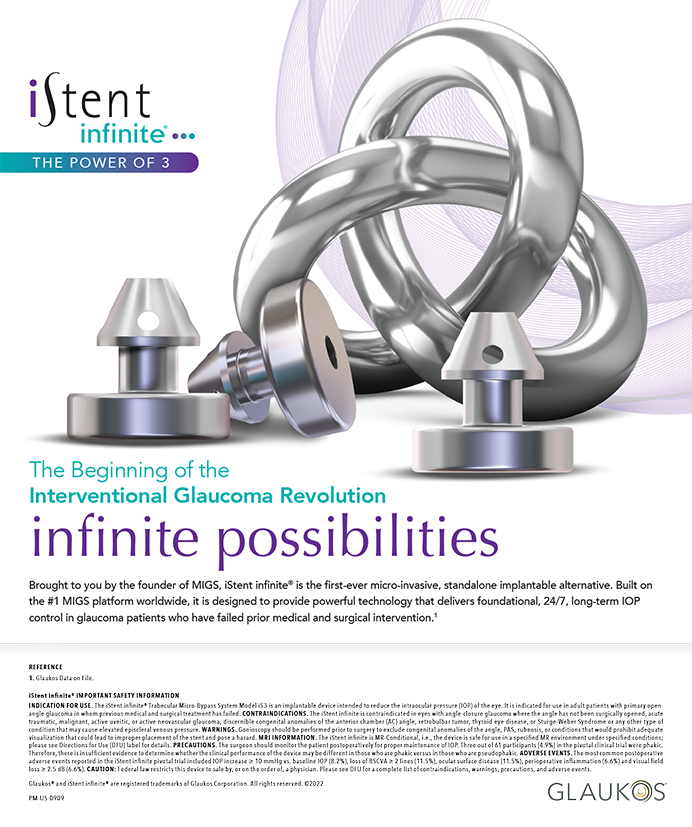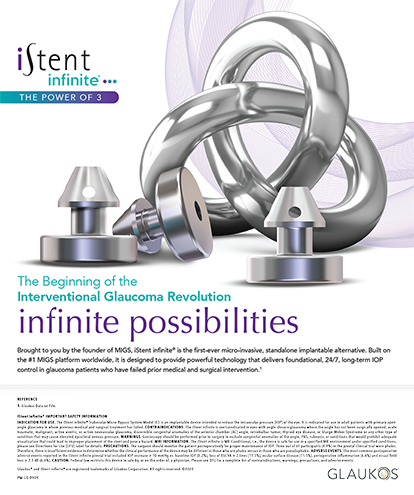This installment of "Peer Review" highlights the most recently published studies on Descemet’s membrane endothelial keratoplasty (DMEK). The world of endothelial keratoplasty is changing rapidly, as the skills of corneal surgeons and number of technologies at our disposal continues to grow. Internationally, DMEK is gaining ground as skilled surgeons’ procedure of choice, because the visual acuity results are superior to those of Descemet's stripping automated endothelial keratoplasty (DSAEK). Currently, DMEK involves a steep learning curve, and the loss of or damage to donor tissue is a major concern. However, new techniques to create automated donor grafts for Descemet's membrane automated endothelial keratoplasty (DMAEK) are becoming available. Advances in this field will ultimately increase DMEK’s acceptance as the procedure of choice for patients with Fuchs’ corneal endothelial dystrophy as well as pseudophakic and aphakic bullous keratopathy. To reinforce last month’s discussion, DMEK and DSAEK are not meant to replace all penetrating keratoplasties, because patients presenting with stromal scarring, corneal irregularity, or significant opacification will still benefit more from a full-thickness or deep lamellar procedure.
Several techniques are available for creating endothelial grafts. I would encourage you to watch videos available on the Internet by Francis W. Price, MD; Majid Moshirfar, MD; and Gerrit R.J. Melles, MD, PhD. In brief, the preparation of the endothelial graft involves detaching Descemet’s membrane peripherally from the stroma. To prepare a large graft, the surgeon mounts the donor corneoscleral rim endothelial side up and stains it with trypan blue. A circumferential cut is made inside the trabecular meshwork. With the blade still in the groove, moving along the circumference, the edge of the membrane is gently pushed centrally to loosen the peripheral rim over 180º. With forceps holding the outer edge, the membrane is slowly stripped until approximately half of the stroma is denuded and folded over. The exposed stroma is stained, and the detached membrane is returned to its original position. The surgeon uses an 8.5- to 9-mm trephine to score the endothelium. Finally, Descemet’s membrane is completely stripped from the posterior stroma and rolled up with the endothelium on the outside. These grafts can be stored in transport media for up to 2 weeks prior to implantation. To reduce the risk of detachment, it is recommended that the graft be washed with balanced salt solution and cleansed of all evidence of the transport media. At the time of surgery, the graft is loaded into a Visian ICL (STAAR Surgical Company, Monrovia, CA), injected into the anterior chamber, and unfolded using an air bubble.
As new techniques arise, Eyetube.net will make them readily available to you. If you have not become a member yet, I encourage you to do so now. In my opinion, Eyetube.net is the best place to review ophthalmic video presentations, and access is 100% free.
I hope you enjoy this installment of “Peer Review,” and I encourage you to seek out and review the articles in their entirety at your convenience.
—Mitchell C. Shultz, MD, section editor
ENDOTHELIAL CELL DENSITY AND VISUAL ACUITY AFTER DMEK
Researchers analyzed the revolution in the surgical treatment of diseases of the corneal endothelium during the past decade. They noted that, 15 years ago, the only surgical treatment for pseudophakic bullous keratopathy and Fuchs’ dystrophy was penetrating keratoplasty. Since then, they added, procedures have been developed that speed patients’ recovery and improve the stability of the globe compared with traditional corneal transplantation. Researchers concluded, ”Each iteration of endothelial keratoplasty has involved the increasingly selective transplantation of corneal endothelial cells. Preliminary results of the most recent form of endothelial keratoplasty, [DMEK], suggest that pure endothelial cell transplantation is on the horizon.”1
In a nonrandomized, prospective clinical study, endothelial cell density (ECD) measurements were taken from 33 patients who underwent DMEK for Fuchs’ endothelial dystrophy or pseudophakic bullous keratopathy. Measurements were available for 26 patients who had 6 and 12 months of follow-up and seven patients who had 24 months of follow-up. In patients with 12 months of follow-up, mean ECD was 2,620 cells/mm2 postoperatively, 1,850 cells/mm2 at 6 months postoperatively, and 1,680 cells/mm2 at 12 months postoperatively. In patients with 24 months of follow-up, mean ECD was 2,700 cells/mm2 before surgery, 2,200 cells/mm2 at 6 months postoperatively, 2,050 cells/mm2 at 12 months postoperatively, and 1,780 cells/mm2 at 24 months postoperatively. In both groups, mean ECD decreased significantly between the preoperative and 6-month measurements (P < .05).2
In a nonrandomized, prospective clinical study, 50 eyes that underwent DMEK for Fuchs’ endothelial dystrophy were evaluated. ECD and BCVA were measured postoperatively and at 6 months postoperatively. In the remaining 40 DMEK eyes, 95% had a BCVA of 20/40 or more, and 75% had a BCVA of 20/25 or more at 6 months postoperatively. Mean ECD was 2,618 cells/mm2 postoperatively and 1,876 cells/mm2 at 6 months postoperatively (n = 35). After combining the outcomes from DMEK and secondary DSEK procedures, researchers reported that 94% reached a BCVA of 20/40 or more and 66% had a BCVA of 20/25 or more (n = 47). Mean ECD was 2,623 cells/mm2 before and 1,815 cells/mm2 6 months after surgery (n = 43).3
In a prospective, nonrandomized clinical study, DMEK was performed on 35 patients with Fuchs’ endothelial dystrophy or bullous keratopathy. Ten eyes had preexisting ocular disease or an early graft detachment. Of the remaining 25 eyes, BCVA was 20/40 or more in 18 eyes by 1 month postoperatively. By 3 months postoperatively, BCVA was 20/40 or more in 23 of the 25 eyes and 20/25 or more in 15 of the 25 eyes.4
In a prospective study, 29 eyes with Fuchs’ dystrophy were treated with DMEK, and corneal tomography was measured pre- and postoperatively using the Pentacam Comprehensive Eye Scanner (Oculus, Inc., Lynnwood, WA). Results were then compared with data from a separate cohort of 198 normal eyes. In the Fuchs’ cohort, the mean preoperative central corneal thickness was 656 μm, which significantly exceeded the mean thickness of 542 μm in the normal cohort (P < .0001). One month after DMEK, mean central corneal thickness decreased significantly to 539 µm (P < .0001), with no further significant decrease occurring between 1 and 3 months after DMEK (P = .39). In the Fuchs’ cohort, keratometry did not change significantly after DMEK (P = .41 and P = .44, respectively). Pre- and postoperative values were comparable to those in the normal cohort. The mean forward displacement of the posterior surface increased by 69 µm 1 month after DMEK (P < .0001) without further significant change between 1 and 3 months.5
DMEK WITH A SUPPORTING STROMAL RIM
Twenty eyes (18 patients) with endothelial dysfunction underwent DMEK with a supporting stromal rim. BCVA and ECD were measured preoperatively and at 12 and 24 months postoperatively. By 24 months postoperatively, 10 of 18 eyes achieved a BCVA of 20/20 or better, and 17 reached 20/40 or better. Primary graft failure occurred in two eyes. The average ECD at 1 year was 1,608 cells/mm2. Twelve of 20 eyes were treated for partial early postoperative graft detachment by the injection of an air bubble into the anterior chamber.6
TISSUE LOSS AND DMEK
Researchers evaluated the percentage of tissue loss that occurs during preparation of Descemet’s grafts for DMEK and the potential for reducing the discard rate of available tissue. Seventy-three Descemet’s grafts intended for use in clinical DMEK procedures were prepared using standardized techniques and were retrospectively evaluated. Five percent showed an inadvertent tear during stripping of Descemet’s membrane from the donor posterior stroma. All showed a final mean ECD of 2,400 cells/mm2 or more. None had to be discarded because of ECD damage induced by the stripping procedure. Of the 73 donor corneas evaluated, 25% showed anterior corneal abnormalities, in particular a dense arcus senilis, which rendered the tissue ineligible for use in any anterior lamellar keratoplasty procedure. Additionally, 55 of the 73 donor corneas could have been used for an anterior lamellar keratoplasty procedure. Investigators concluded, “If various lamellar procedures could be synchronized by enlarging the pool of surgeons requesting tissue, a total of 124 transplantations, that is, 69 DMEK and 55 deep anterior lamellar keratoplasty procedures, could have been performed out of a pool of 73 donor corneas. Therefore, despite some tissue loss due to preparation error, overall DMEK may allow more efficient use of donor corneal tissue, up to 170%.”7
DMEK VERSUS DSEK
In three separate case reports, a total of three eyes (three patients) that underwent DSEK for Fuchs’ endothelial dystrophy showed fluctuation and/or poor visual acuity ranging from 20/80 to 20/40. In a secondary procedure 16 to 22 months after the initial DSEK, the DSEK graft was removed and replaced by a DMEK graft. Investigators evaluated the clinical outcome by comparing the preoperative BCVA to the postoperative BCVA in addition to performing Pentacam imaging and biomicroscopy. All secondary DMEK procedures were uneventful. Three months after secondary DMEK, all eyes had a BCVA of 20/25 or better. Pentacam analysis showed a virtually stable anterior corneal curvature in all cases, but the transplant exchange induced a variable refractive change at the posterior corneal surface. Researchers concluded that, when managing DSEK cases with poor visual outcomes, secondary DMEK may lead to full visual rehabilitation, as in primary DMEK.8
DMAEK
Researchers described the surgical technique and possible outcome of DMAEK. They claimed the procedure combines the “superior vision potential” of DMEK with the “easier insertion and manipulation” of DSAEK. They added that DMEK has a steep learning curve in terms of the tissue’s preparation and that there is a risk of tissue loss.9
In a prospective, nonrandomized study, 24 eyes that underwent DMAEK and 22 eyes that underwent DMEK were evaluated for corrected distance acuity, full visual field testing, and pupillary size. Investigators used slit-lamp photographs to measure the inner and outer diameters of the DMAEK stromal ring. Additionally, patients completed a questionnaire rating postoperative symptoms and visual complaints. Mean postoperative follow-up time was 5 months in the DMAEK and 14 months in the DMEK group. At follow-up visits, mean visual acuity was 20/25 in the DMAEK group and 20/20-3 in the DMEK group. The mean central opening of the DMAEK stromal ring was 5.6 X 5.5 mm. The incidence of visual field defects (including visual complaints of glare, halos, light sensitivity, and night driving difficulties) was comparable between groups (P > .1). A larger scotopic pupil was not associated with an increased incidence of visual field defects in either group (P = .3).10
- Fernandez MM,Afshari NA.Endothelial keratoplasty:from DLEK to DMEK.Middle East Afr J Ophthalmol.2010;17(1):5-8.
- Ham L,Dapena I,Van Der Wees J,Melles GR.Endothelial cell density after Descemet membrane endothelial keratoplasty: 1- to 3-year follow-up.Am J Ophthalmol.2010;149(6):1016-1017.
- Ham L,Dapena I,van Luijk C,et al.Descemet membrane endothelial keratoplasty (DMEK) for Fuchs’endothelial dystrophy: review of the first 50 consecutive cases.Eye (Lond).2009;23(10):1990-1998.
- Ham L,Balachandran C,Verschoor CA,et al.Visual rehabilitation rate after isolated Descemet membrane transplantation: descemet membrane endothelial keratoplasty.Arch Ophthalmol.2009;127(3):252-255.
- Kwon RO,Price MO,Price FW Jr,et al.Pentacam characterization of corneas with Fuchs’dystrophy treated with Descemet membrane endothelial keratoplasty.J Refract Surg.2010;26(12):972-979.
- Studeny P,Farkas A,Vokrojova M,et al.Descemet membrane endothelial keratoplasty with a stromal rim (DMEK-S).Br J Ophthalmol.2010;94(7):909-914.
- Lie JT,Groeneveid-van Beek EA,Ham L,et al.More efficient use of donor corneal tissue with Descemet membrane endothelial keratoplasty (DMEK):two lamellar keratoplasty procedures with one donor cornea.Br J Ophthalmol. 2010;94(9):1265-1266.
- Ham L,Dapena I,van der Wees J,et al.Secondary DMEK for poor visual outcome after DSEK:donor posterior stroma may limit visual acuity in endothelial keratoplasty.Cornea.2010;29(11):1278-1283.
- McCauley MB,Price FW Jr,Price Mo.Descemet membrane automated endothelial keratoplasty:hybrid technique combining DSAEK stability with DMEK visual results. J Cataract Refract Surg.2009;35(10):1659-1664.
- Da Reitz Pereira C,Guerrra FP,Price FW Jr,Price MO.Descemet’s membrane automated endothelial keratoplasty (DMAEK):visual outcomes and visual quality [published online ahead of print December 22,2010].Br J Ophthalmol. doi:10.1136/bjo.2010.191494.


